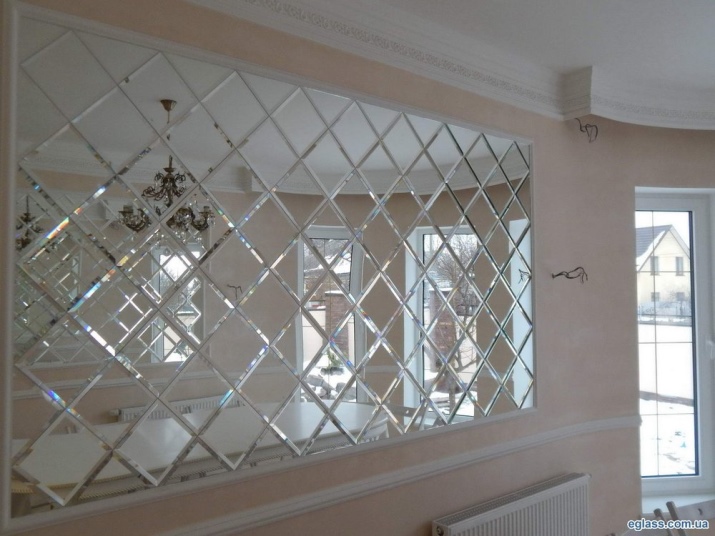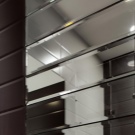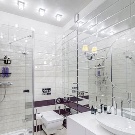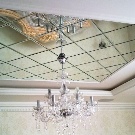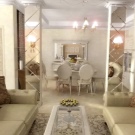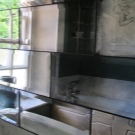Mirrored Tile with Facet
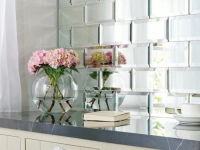
Of course, everyone wants to live in a beautiful, modernly decorated interior. And today for this there are all conditions. Manufacturers of construction and finishing materials are constantly offering interesting novelties and modern materials that allow any apartment to make its own unique, fashionable and stylish. Mirror tile with facet is one of the most beautiful modern materials, ideal for decorating the interior of any room.
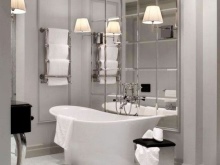
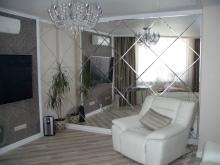
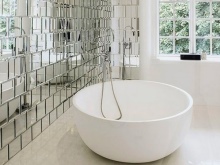
Features
Mirror - a fragile, beautiful material, which has been used for many hundreds of years as an element to decorate the human home. The first mirrors, according to scientists, appeared in the Bronze Age. For many decades, only very wealthy people could afford to have a mirror, because its value is commensurate with the price of a small estate.
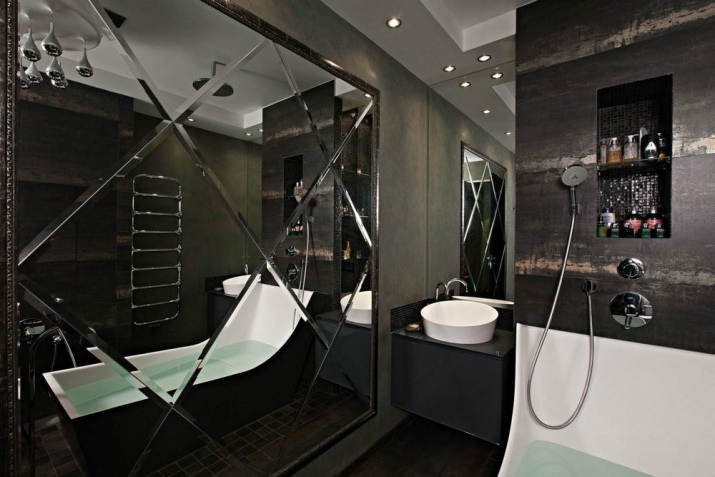
With the development of technology the mirror became a much more accessible subject and soon it could be found as a decorative object of the interior. One of the first interiors decorated with a mirror is considered to be the mirror cabinet of Maria de Medici.
Today there is a mirror in every home. It is both a purely functional thing and an interior object. Mirror tiles with facet differs from ordinary tiles by the presence of an edge.
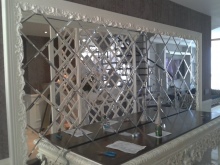
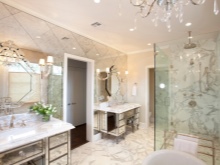
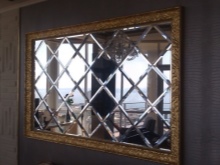
The mirror is a sharp and dangerous object, so in order to make the use of such a board as comfortable as possible, it was invented to cut the top edge of the panel at an angle. The width of such an edge reaches 40-50 mm. Such a decorative bevel is called a facet.
The facet is not only a peculiar safety element, it is also a very beautiful decoration. The beveled edge begins to shimmer with all the colors of the rainbow under the rays of the sun. Mirrored surface always looks very beautiful, stylish and modern. In any interior, and in any room.
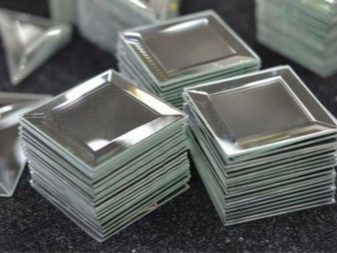
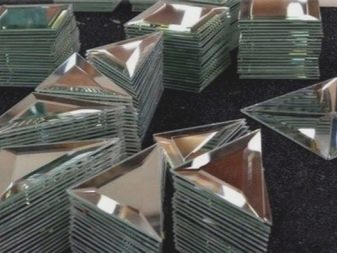
The additionally designed backlighting will help to make the coverage even more spectacular. Especially if the panel has a wide facet. A narrow facet allows you to make the tile more neat and elegant.
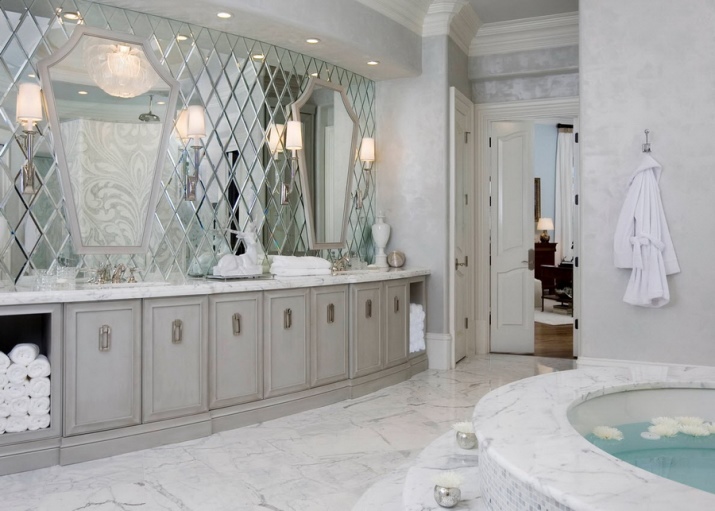
Among the main advantages of such tiles are:
- Durability. The faceted tile well withstands temperature fluctuations and high humidity.
- Resistant to alkalis, acids, aggressive media contained in detergents.
- Easy care and practicality.
- Aesthetic appeal. A mirror coating always looks more advantageous and effective than even the most beautiful tile.
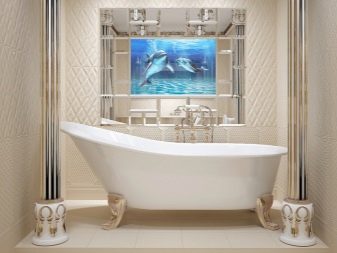
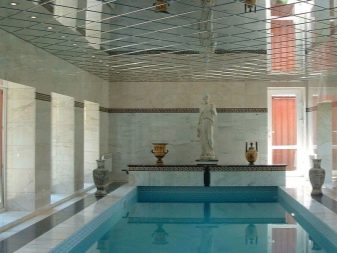
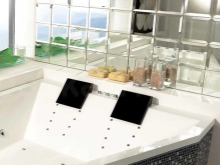
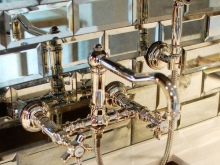
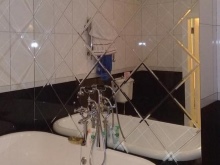
When decorating the interior, such a panel is used for facing walls, the ceiling, some pieces of furniture, other surfaces.
The panel can be purely mirror or additionally decorated with elements of another material.

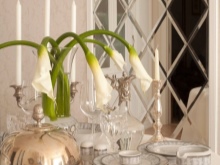
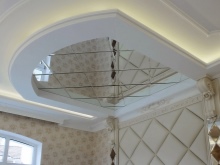
One of the advantages of the mirror board is its real ability to visually increase the size of the room. For example, if you make such a panel the wall opposite the window, the room will seem much wider than it actually is. This effect is often used when cladding small-sized rooms: bathrooms, kitchens, corridors.
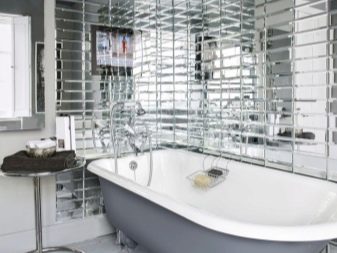
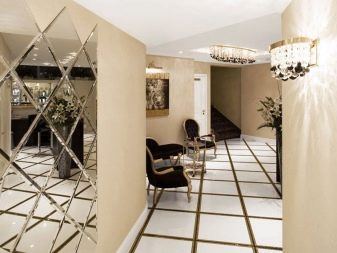
Rules of use
One of the rules for using the material is that the panels must be placed at different levels. If this principle is violated, the room will look disharmonious due to the fact that the elements of one wall or canvas will be reflected in the elements of the other.
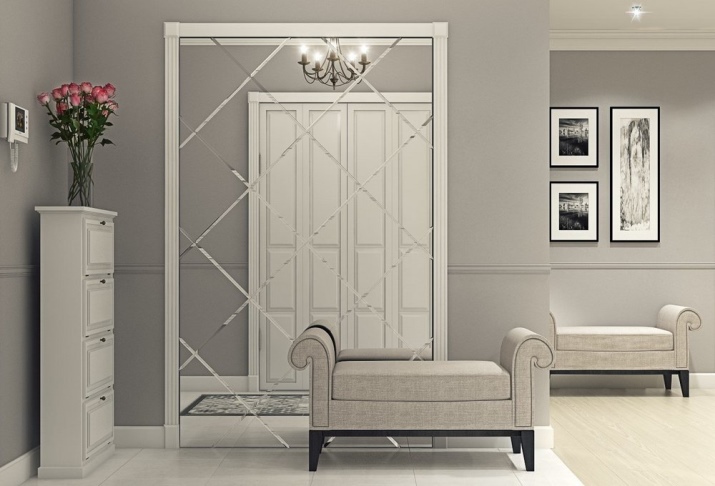
Mirror tiles - a universal finishing material, which looks absolutely harmonious and appropriate in different interiors.
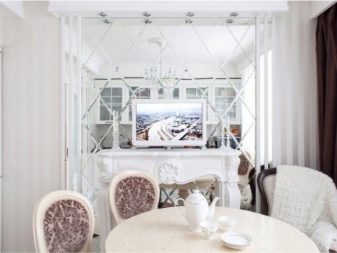
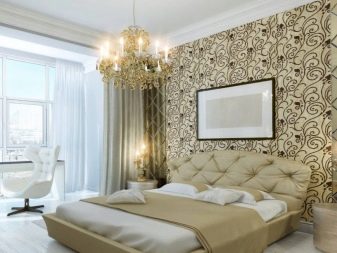
- Bathroom. Most often, a mirror tile with facet is preferred to use exactly in the interior of the bathroom. The room becomes brighter, more spacious, the use of mirror panels allows different experiments with the design of the room.
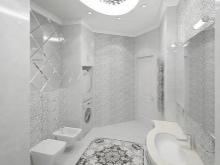

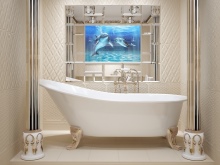
The mirror is not afraid of moisture and high temperature. It is practical and does not require special care, and the interior of the room will always look fashionable and modern.
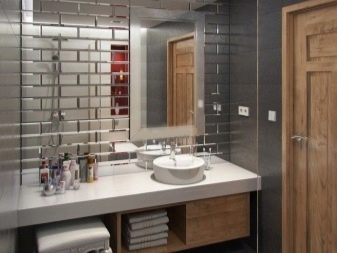
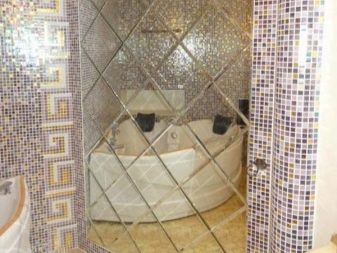
- Kitchen. Most often such tiles are used in combination with other finishing materials. The mirror helps to give the interior of the kitchen a finished, sophisticated look.
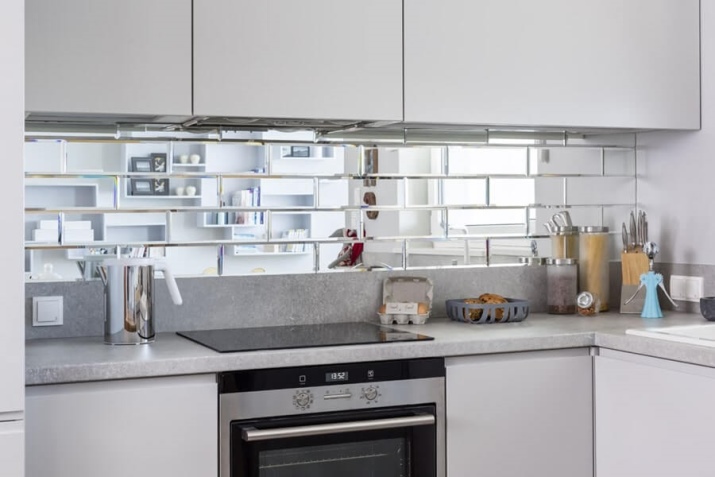
- Living Room. A mirror panel is not as often used when decorating the living room as, for example, for finishing the bathroom or kitchen. Most often, the help of a mirror is resorted to when the design provides a luxurious interior, sustained in the style of the Middle Ages, for example. In such cases, mirror inserts adorn the walls, furniture and ceiling of the room and are most often complemented by spotlights to create a stronger effect.
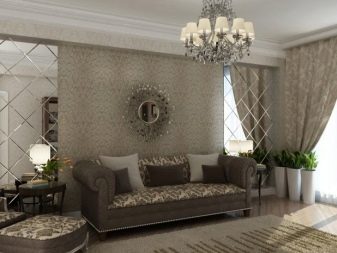

- Bedroom. Intimate, relaxing bedroom environment is ideal for the use of sparkling tiles in the room. There shouldn't be too much of it. A few sparkling tiles in combination with another, more traditional finishing material is enough.
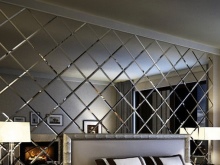
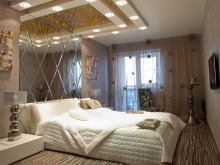

- Public premises. Today, the mirror finish can be found in nightclubs, restaurants, cafes, offices, beauty salons and other premises of different purposes.
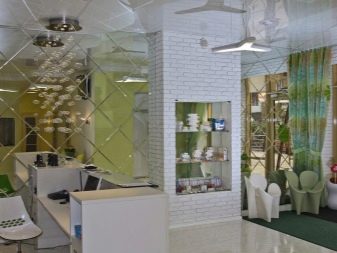
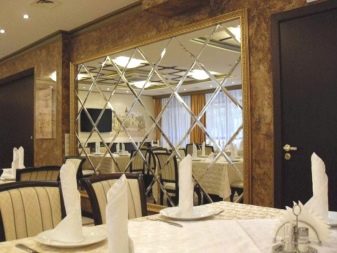
Mirror plate with facet is used to decorate interiors with a variety of different stylistic solutions. For example, classical, modern, minimalist, Victorian, Romanesque, Baroque, Art Nouveau.
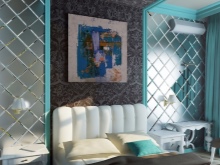
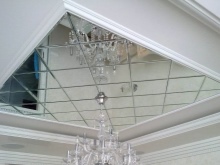
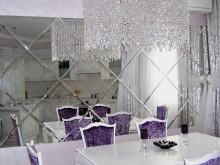
Varieties
Mirror tile with facet is available in different shapes and sizes. The most popular variant is a square. This board is the most practical, it is easiest to install, it looks great in any interior and is combined with other finishing materials.
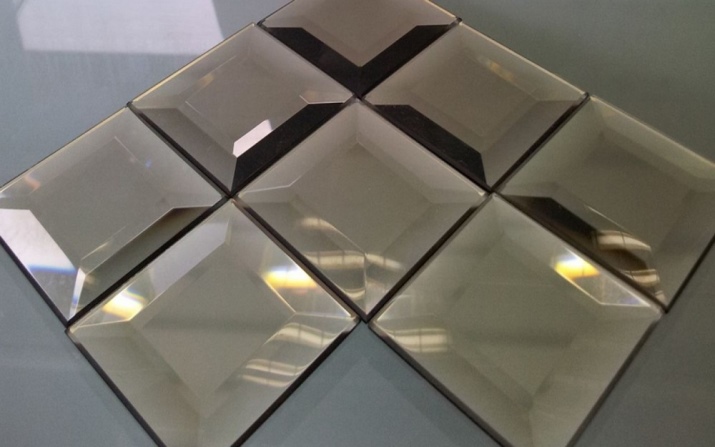
A variation of the square - the rhombus. To make the interior look more interesting, the tiles prefer to be laid exactly diagonally.
Rectangular tiles are also very popular. It is laid in the form of brickwork with an offset or in staggered order.
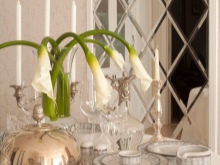
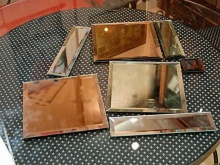
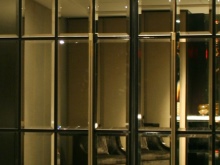
These are the most popular, but far from the only forms of mirror panels. Today you can meet the plate, made in the form of a trapezoid, triangle, oval, circle, irregular polygon.
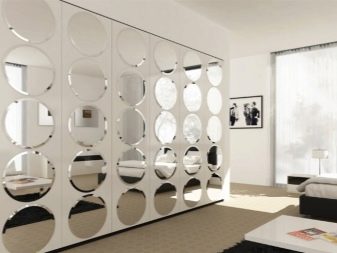
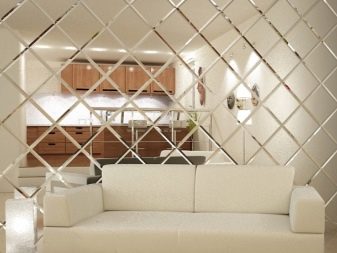
Dimensions
Today in construction stores you can find a mirror tile, made in a variety of sizes. The most popular of them are traditionally considered: 15x15, 20x20, 25x25 and 30x30 cm. Such tiles are easy and convenient to install, it looks harmoniously in any interior and perfectly combines with wallpaper, wall panels, ceramic tiles and other materials.
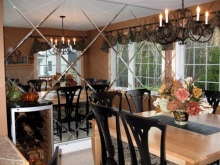
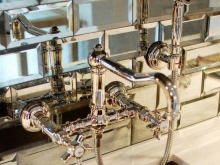
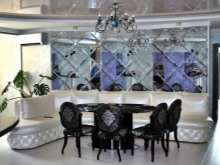
In addition to large tiles, a separate mention deserves a mirror mosaic. Tiny squares with faces, shimmering with all the colors of the rainbow, will be a great addition to the interior of the bathroom or kitchen, living room or corridor. Most often, a mosaic is used in combination with tiles of regular size. It is used to make a panel or decorate areas around a mirror, lamp, cabinet.
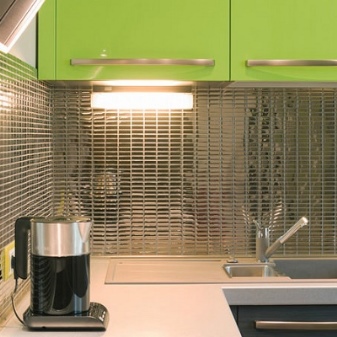
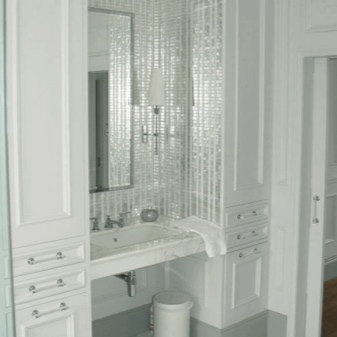
Materials
Mirror tiles are made of different materials.
- Glass. Mirror tile made of glass is the most common option. In addition to the standard presented in stores, you can always order in special workshops panels of individual shape and size, as well as with the original shape of the edge. The most common is the classic transparent mirror tile. But there are also more unusual solutions, such as panels in shades of bronze or silver tiles. They can be monochrome or decorated with a different picture by photo-printing technique.
- Polyurethane with a special reflective coating. The option externally resembles a mirror tile, but not with such a clear and distinct reflection. Such material is used mainly for ceiling cladding. A noticeable difference from the glass tile is less weight, which greatly facilitates installation.
- Plastic. The acrylic analogue of glass is much safer than traditional tiles. Even if the slab cracks and breaks, the shards are absolutely safe for humans.
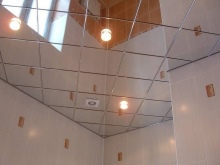
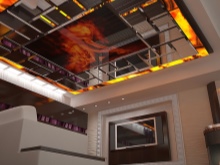
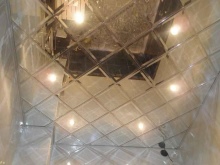
Colors
Colorless tiles - the most common option, which is great for decorating any interior. However, this is not the only option at all. Often there are tiles in the same color as the interior, such as white, milky, beige, blue, olive, gray. More refined options imitate the surface of natural marble or performed in the color of silver, gold and bronze.
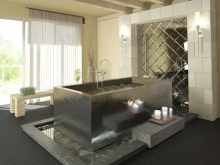
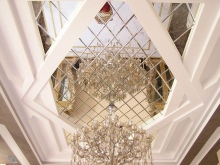
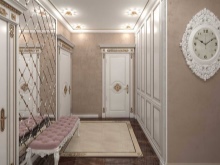
Multicolored tiles are used as an independent element of the decor or in combination with a colorless material.
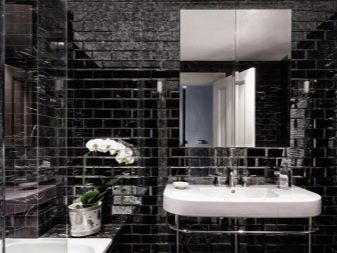
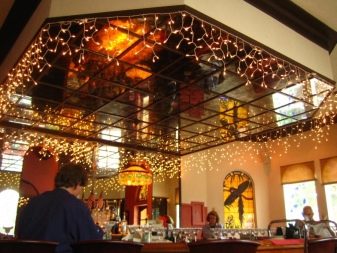
Tips
The entire work process for tiling the surface with mirror tiles can be divided into several stages:
- Preparation of the walls or ceiling (cleaning from the remains of wallpaper or paint, leveling the surface, scraping with subsequent priming).
- If necessary, you can treat the surface with an antibacterial and antifungal composition.
- To compare the surface of the mirror tiles and ceramics, you can use a cement-sand mixture.
- The tiles are planted on the adhesive, designed specifically for mirrors.
- When the work is completed, the tile is cleaned of traces of glue, and the surface is left to dry completely.
